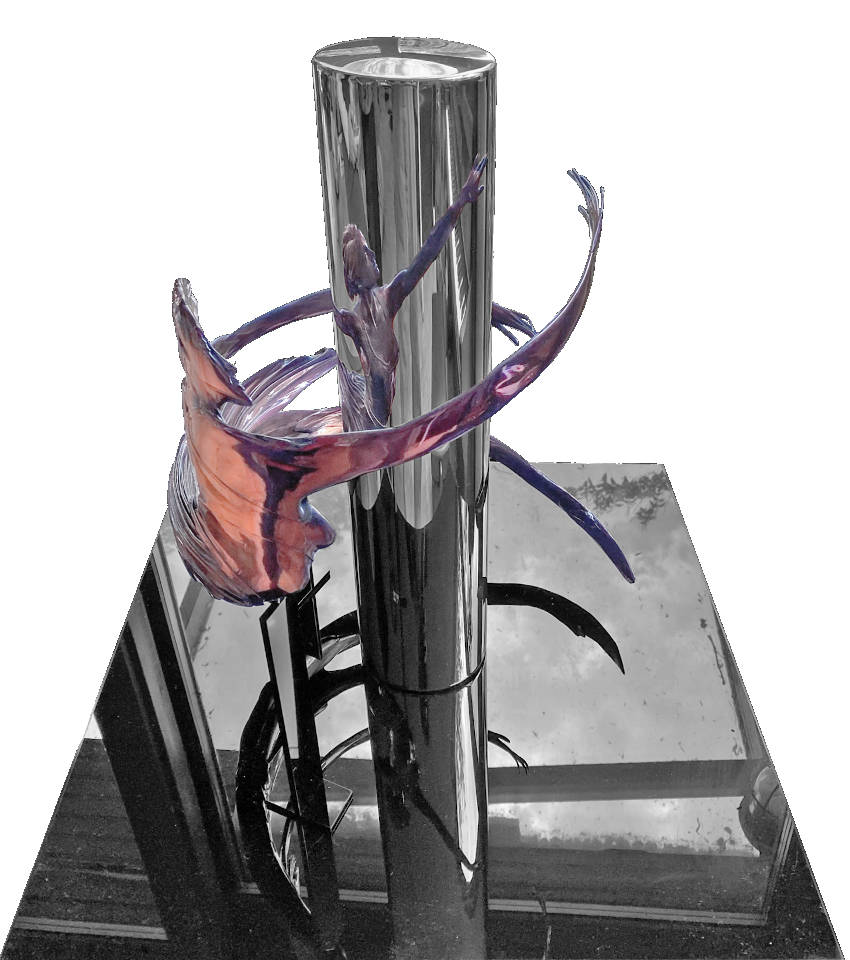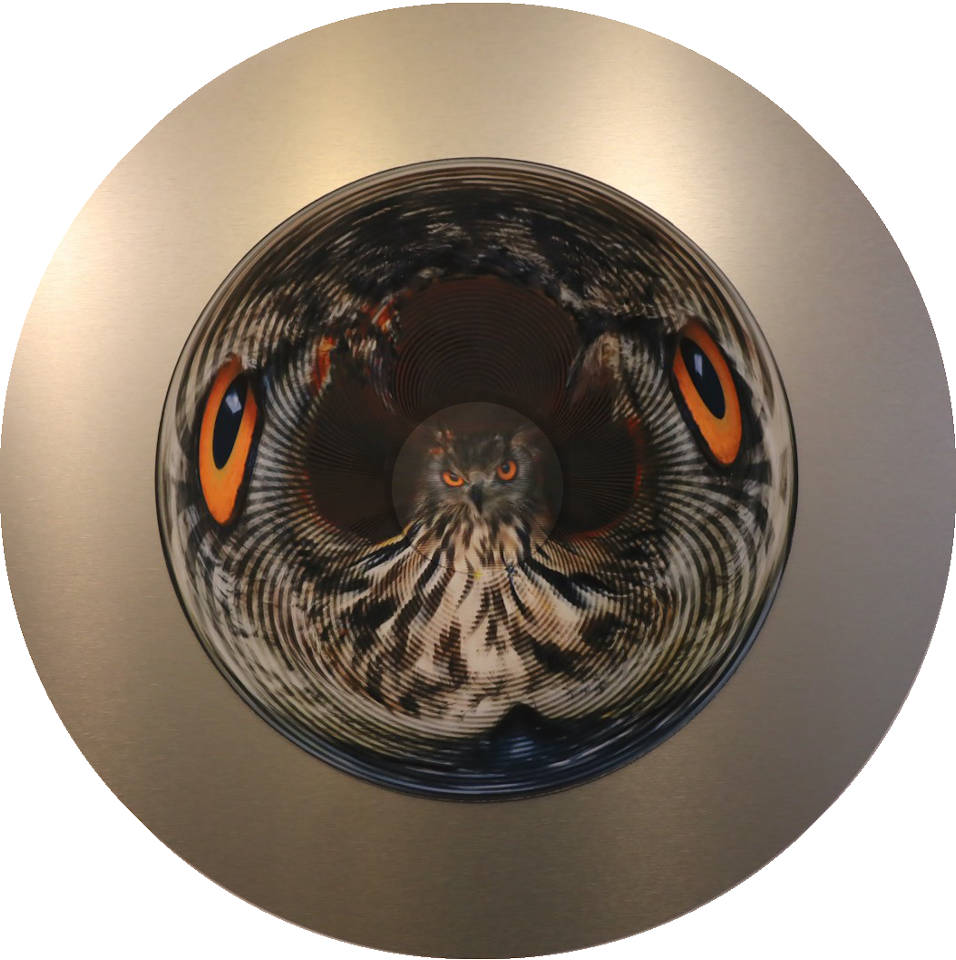Jonty Hurwitz
![]()
Jonty Hurwitz is a unique artist, quite incomparable, dare I say a visionary. He fuses art and science in an extraordinary way. His sculptures are comprised of Perspex, steel, resin and/or copper and are fabricated using over a billion computer calculations and complex algorithms.
The resulting pieces are anamorphic which rely on scans of familiar forms, such as hands, faces and even frogs, they are hand painted and distorted, then when placed in front of a cylindrical mirror, the object reveals itself precisely and anatomically correct. This is a remarkable achievement, startlingly original and borderline genius. This digital deconstruction reveals perfect realism in reflection and is an unfathomable feat of technical ability and visual mastery. This is not just clever art.
One would described Jonty as a Renaissance man, for it was during that period of High Italian art, that artists were as much scientists and mathematicians as they were painters and sculptors. When one looks at Leonardo Da Vinci’s notebooks, they were filled with anatomical, astrological and zoological studies, he even devised inventions such as futuristic flying machines. Likewise Michelangelo was a brilliant architect and understood the laws of sacred geometry.
Jonty Hurwitz is right on the cutting edge of where art meets science in the 21st Century. Hurwitz explained that his artwork is his way of “expressing calculations visually”. It is also a means for him to experiment with the latest technological innovations in terms of production.
He was born in Johannesburg in 1969 and currently lives in London. He has won numerous awards for art and design with his ‘nano’ sculptures featured in the Guinness Book of World Records. He is also an elected member of the Royal British Society of Sculptors. His work has been exhibited internationally and is held in important private and public collections.
“The Binge Thinking Collection is my study on the physics of how we perceive space. Each piece is the stroke of over 1 billion calculations and draws upon a unique way in which our brains interpret the spacial information they receive. I usually start by expressing a concept using mathematical tools, often involving billions of calculations and many months of preparation. I then explore ways to manifest these formulae in the physical world. Each piece is both an engineering and artistic challenge. The mediums I have worked with are perspex, steel, resin, powder, copper and acrylic.”
Monday to Friday 10.00am to 6.00pm
Saturday 10.00am to 1pm
Avenida José da Costa Mealha nº 43
8100-500 Loulé, Portugal
Tel: (00 351) 289 419 447
info@artcatto.com
www.artcatto.com

©2025 ArtCatto
Designed by Super8
























